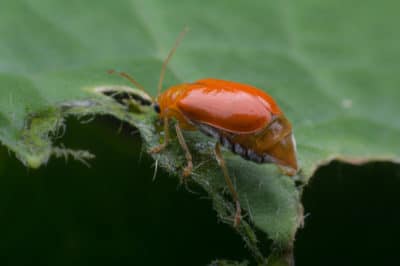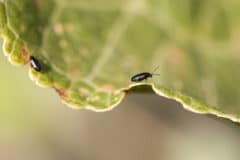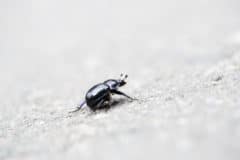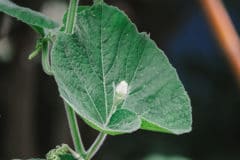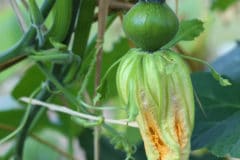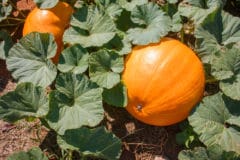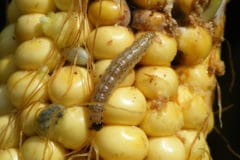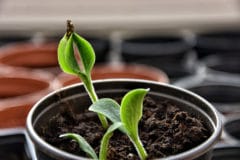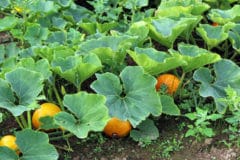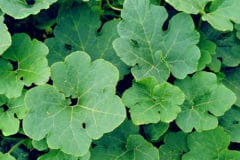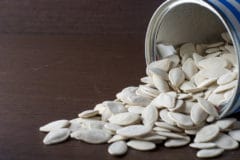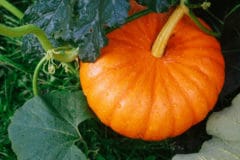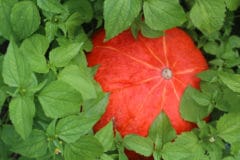What Is a Pumpkin Beetle?
Pumpkin beetles begin as small yellow eggs that are not easily seen by the human eye. Since they are laid around the base of the plant and into the ground around it, it is nearly impossible to tell if you have an infestation until the eggs begin to hatch.
After hatching, the pumpkin beetle is impossible to miss. It is a bright red bug that will often cluster on the leaves of the pumpkin plant. Both new and mature leaves are vulnerable, and the holes are evident as the bugs move from leaf to leaf.
How To Eradicate the Pumpkin Beetle
There are several ways to get rid of the pumpkin beetle, both naturally and with human-made chemicals. Which method you choose depends on your gardening philosophy.
Insecticides can help control the pumpkin beetle infestation by killing both the eggs and the larvae before they can hatch into adult bugs. There are also treatments for adult bugs that will kill them and prevent them from laying more eggs. Look for a pesticide that contains neem oil or rotenone, or a human-made pesticide.
If you are growing pumpkins organically, you can:
- Combine wood ash and lime to treat the plants.
- Treat plants with diluted neem oil.
- Pick mature beetles off of the plants by hand.
- Spray soapy water over the plants.
Prevention of Pumpkin Beetle Infestations
The best way to protect pumpkin plants from the beetle is to prevent them from appearing in the first place. One of the best ways to do this is to provide an active, healthy growing environment for the plants. Proper spacing, good fertilizer, and adequate water and sunlight all work together to prevent beetle infestations.
If you already have pumpkin beetles, you can prevent future colonies by burning all of the pumpkin debris from the garden and planting [growing-pumpkins]pumpkins[/link]in a different area the next season. Without pumpkin plants to eat, the beetle will naturally die out.
Despite the potential for crop damage by the pumpkin beetle, pumpkin plants remain one of the easiest and most fun plants to grow. Provided you take the proper care and precautions, you can easily keep your plants healthy and thriving.
